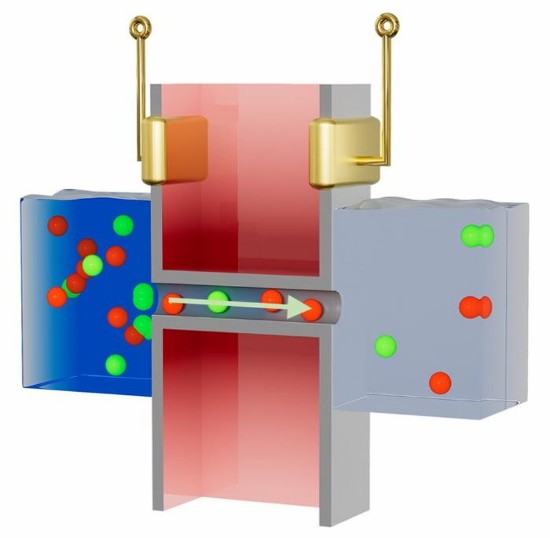Back in 2019, University of Stanford researchers published a paper describing what they called “blue energy.” It proposed a mixing entropy battery or MEB that uses the natural electrochemistry created when saltwater and freshwater interact. The higher salt concentration in the seawater would create interactions with the molecules from freshwater to create pressure that could be turned into electricity. The energy potential, stated the paper, could yield as much as 2 Terawatts of clean power. But there were difficulties in tapping the energy.
Four years later, a research team at the University of Illinois Urbana-Champaign has risen to the challenge of tapping salinity gradient energy existing between sea and freshwater. In the journal Nano Energy, they describe the design of a nanofluidic device capable of extracting power where freshwater and seawater meet.
How can you produce electricity at these saline-freshwater boundaries? The natural flow of salt molecules from the seawater containing higher concentrations to the freshwater with lower salt levels creates electrically charged ionic particles that can be streamed to flow. The University researchers decided to build a nanoscale semiconductor device featuring a narrow channel to guide these ions through it to create an electric current that could produce practical power generation.
Jean-Pierre Leburton, Professor of Electrical & Computer Engineering at the University described the results of the initial design stating “It is quite versatile and already shows strong potential for energy applications.”
The device takes advantage of a phenomenon first identified by Charles-Augustin de Coulomb, an 18th-century French engineer, scientist and military officer who discovered Coulomb’s Law describing the electrostatic force of attraction and repulsion displayed in atomic interactions. The device invented by Leburton and his colleagues takes advantage of a phenomenon known as Coulomb drag which occurs when a current in one electronic circuit induces a responsive current in a neighbouring circuit.
What surprised Leburton and his research team is that the device they have designed works equally well when the charge is reversed. Not only that, as the ions run through it, an amplification effect increases the electricity being generated.
Leburton and his colleagues have applied for a patent with plans to scale it to use it in power generation. Leburton states, “We believe that the power density of a device array could meet or exceed that of solar cells. And that’s not to mention the potential applications in other fields like biomedical sensing and nanofluidics.”
Where would you install their invention? For large-scale power generation, a scaled version of the device could be installed at the mouths of rivers that run into the ocean, or in desalination and wastewater treatment plants. The nanoscale features of the device, however, could be taken advantage of to create tiny, self-powered detectors and sensors with no battery requirement. These could be used anywhere there is a sufficient gradient between two fluids in proximity to generate the flow of ions from one to the other.
















